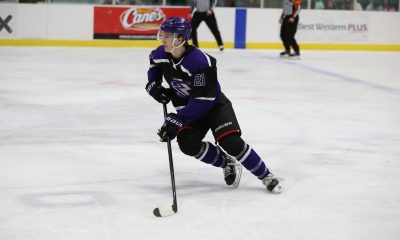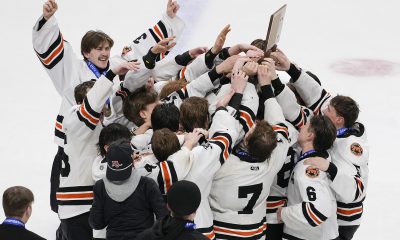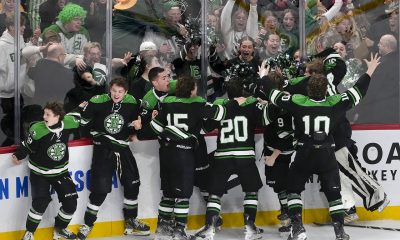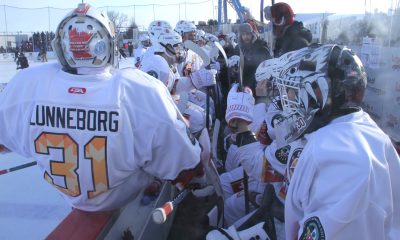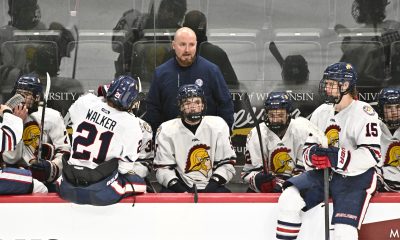Boys
Northern Hockey Is Safe
No matter the class, boys’ hockey in Section 7 remains a viable threat.
-
by
John Gilbert
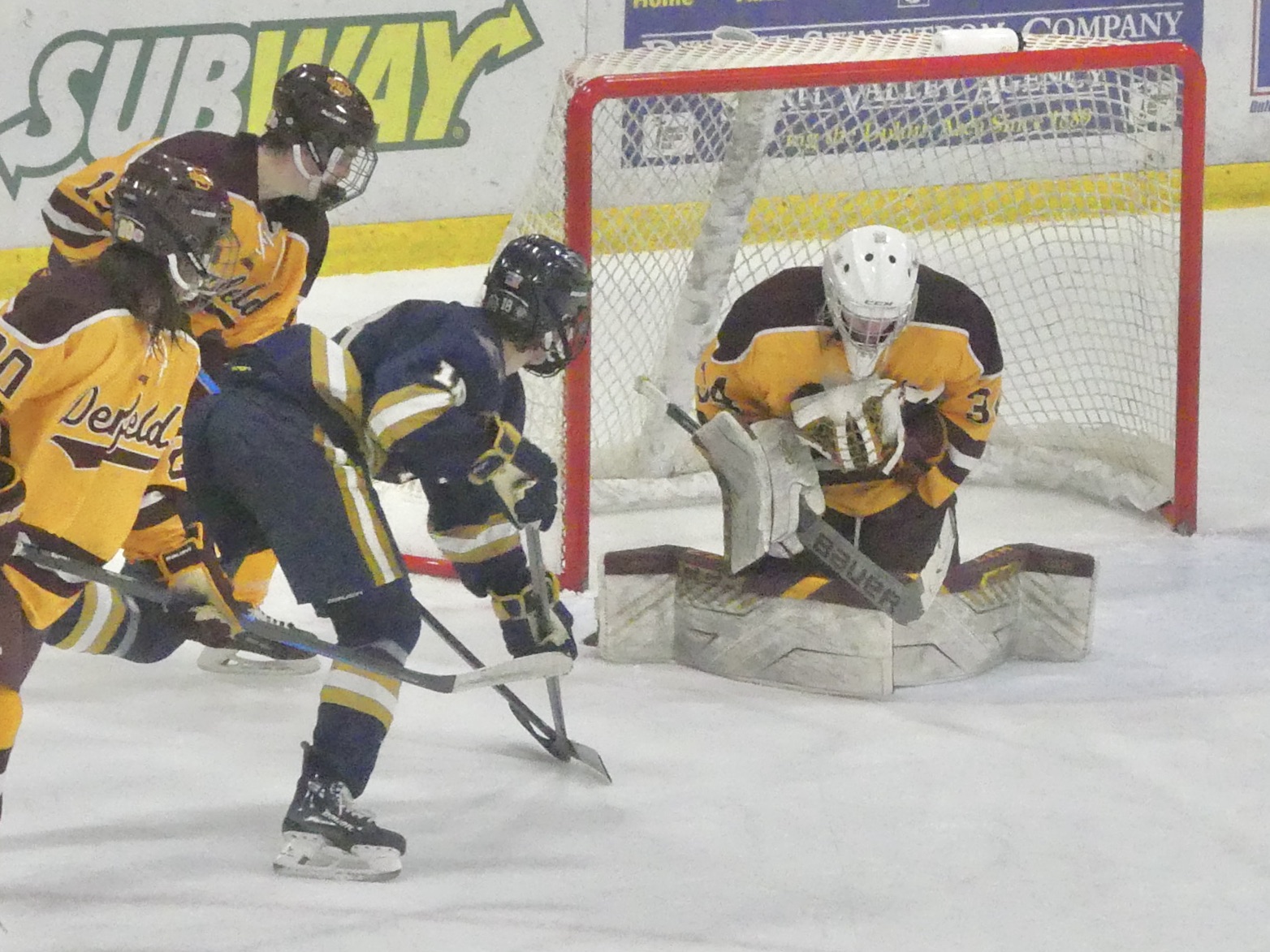
There are annual concerns that the high level of northern Minnesota high school hockey might erode and diminish as the assets of huge enrollment swings more and more heavily toward the Twin Cities area.
But early results from this season indicate that the northern corner of the state known as Section 7 will continue to be a viable threat at least for the foreseeable future.
The mixup of the area is that Hermantown — a geographical area large in size but small in enrollment, just northwest of Duluth — has emerged as the best team and youth program in the area. But while some of the larger, Class 2A, Section 7 schools fluctuate quite a bit in their good fortune, Hermantown insists on staying in Class 1A, Section 7, to play with the smaller schools where it is most likely to succeed.
While the Hermantown youth teams all play at the highest classification, and win consistently, they feed an expansive high school program that can roll out three or even four balanced forward lines, three sets of defensemen, and depth in goaltending that is usually the best in the region.
If the proof of the pudding is in how successfully players advance to play with college scholarships, and maybe even pro hockey, the Hermantown Hawks are a constant source of amazement. For the past decade, the University of Minnesota Duluth has been criticized for taking so many prospects from Hermantown. But when the Bulldogs won three NCAA championships with teams all strongly flavored by Hawks, the critics started to realize that instead of suggesting UMD had too many Hermantown players, maybe they needed more!
The Winnipeg Jets, for example, have Neal Pionk as the anchor of their defensive corps, and Dylan Samberg is another Jets teammate. Both played together on state tournament teams at Hermantown, then played on the same UMD teams winning NCAA titles before they signed NHL contracts.
This season’s UMD team is led by Blake Biondi, who is captain and second-generation forward following his dad, Joe Biondi, to UMD. Blake, of course, was captain and Minnesota’s Mr. Hockey at Hermantown as a senior, where he was joined by current UMD defensemen from Hermantown, including veterans Darian Gotz and Joey Pierce, and just brought in freshman Aaron Pionk, Neal’s brother, who played forward until this season, when coach Scott Sandelin moved him to defense and put him in charge of running the power play.
At Hermantown this season, coach Pat Andrews had to rebuild from key goal-scoring losses to graduation, and the departure of highly skilled brothers Zam Plante and Max Plante, who played as teammates on a state championship Hermantown team. Both committed to UMD before joining their parents in a move to Chicago. Father Derek Plante, a former UMD standout who played over a decade in the NHL, was hired as assistant coach of the Blackhawks in their rebuilding plan.
Max Plante made the U.S. Development camp’s Under-18 team, and Zam — who is a year older — made the Chicago Steel and was traded to the Fargo Force in the U.S. Hockey League. Both will come to UMD next fall as freshmen, but they left enormous holes in the Hawks high school lineup.
While all the other Class 2A and Class 1A Section 7 teams lost heavily from graduation as well, and perennial powers such as Duluth East, Cloquet-Esko-Carlson, and even Grand Rapids are rebuilding, Hermantown is the only program rich and deep enough to merely reload to find scoring. Against Class 2A foes this season, Hermantown beat Cretin-Derham Hall, tied Hill-Murray and then beat Centennial. It also defeated defending Class 1A champion Mahtomedi 5-1. Then, they faced Duluth Denfeld.
Duluth Denfeld moved up to Class 2A this season, ties Hermantown
Denfeld has an interesting program. Located in the West End, West Duluth and Piedmont Heights youth program region — which produce good players, but without the depth Hermantown enjoys. But the Hunters broke new ground in football during the fall. They also have a strong basketball program. Their hockey team, coached by former UMD defenseman Dale Jago, started off beating teams and establishing what might normally be considered an upset is not an upset when facing this Denfeld team’s swift-skating, puck-skilled players.
In an interesting maneuver, Denfeld made a controversial decision to move up from Class 1A to the larger Class 2A. Many larger schools have traditionally sought to move down, to avoid getting beaten by usual meat-grinder Duluth East. But this year in northern Minnesota, Cloquet-Esko-Carlton moved from Class 2A to Class 1A in Section 7, while Denfeld passed the Lumberjacks going the other direction, moving up a class.
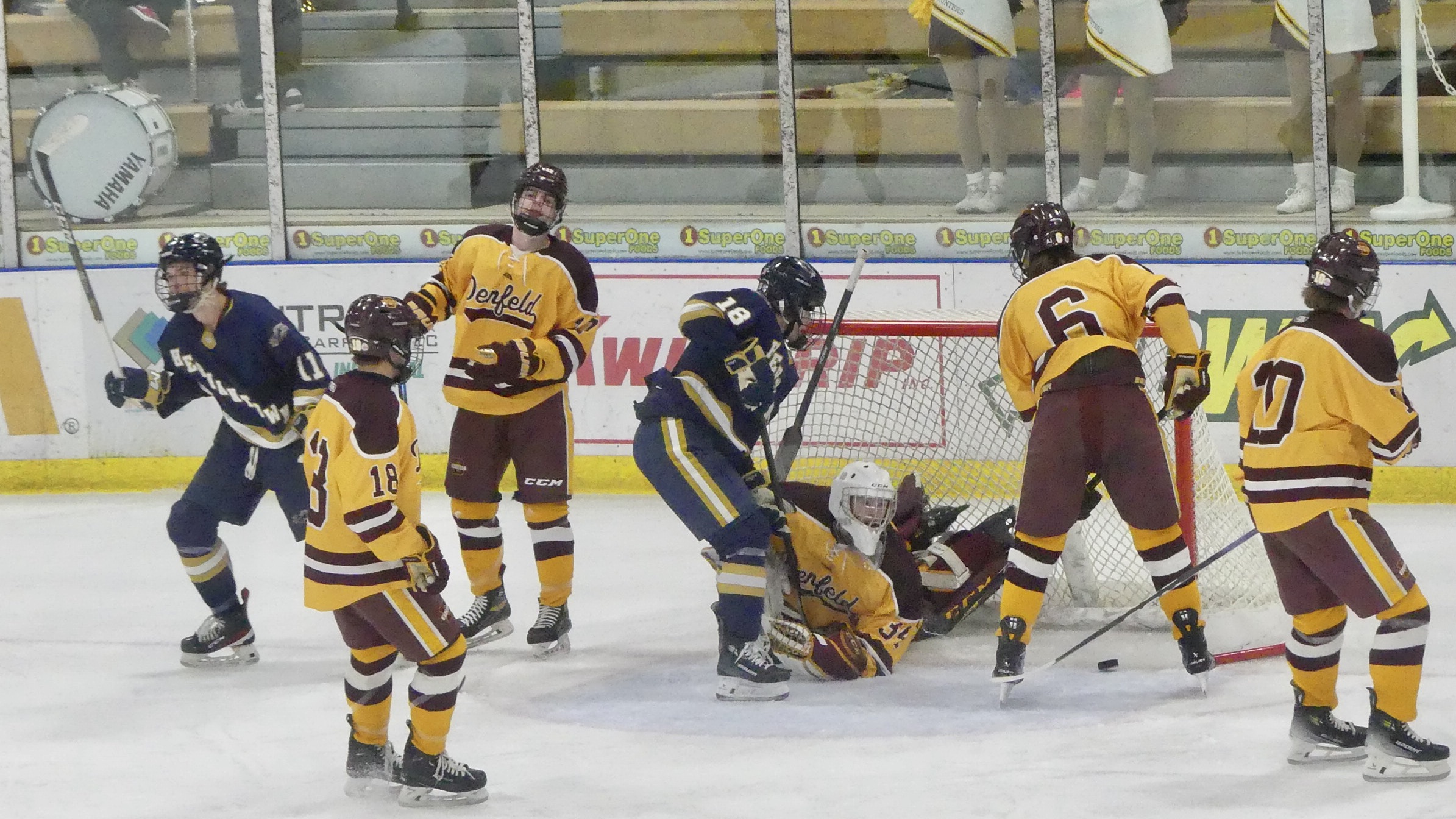
Hermantown’s Jack Slattengren (11) peeled away from the goal after scoring the Dec. 19 game’s first goal against Duluth Denfeld goalie Connor Doyle. (MHM Photo / John Gilbert)
Denfeld and Hermantown played at Essentia Duluth Heritage Center on the Tuesday before Christmas, and the Hunters were definitely swift and skilled enough to take on their heralded rivals. That was evident from the drop of the puck.
The result was mostly a coming out party for Connor Doyle, Denfeld’s goaltender. The more the Hawks attacked, the better Doyle seemed to play. Jack Slattengren gave Hermantown a 1-0 lead as he raced in on a goal-crashing attempt and redirected a goal-mouth pass.
In the second period, the Hawks outshot Denfeld 17-8 and took a 2-0 lead on a Bradford Skytta goal. Doyle kept the Hawks at bay. Denfeld narrowed the gap with a Brady Wick power-play goal from the right poinot. The Hawks almost seemed content to hold that 2-1 lead over Denfeld through the third period, and maybe that was coach Andrews’ intention — to let the Hawks prove to themselves that then can hold onto a slim lead against a team that was throwing everything they could summon at them.
It almost worked. As Denfeld pulled Doyle for a sixth attacker late in the game, Cory Backstrom scored a power-play goal and the sudden 2-2 tie stunned the Hawks, and the fans, into silence. The eight-minute overtime still ended with a 2-2 result as the final score. Hermantown outshot Denfeld 44-28. Doyle’s 42 saves commanded the spotlight and led the Hunters to center stage.
Maybe that’s what those pushy Class 1A schools get for taking on those proud big-school Class 2A teams!
NCHC to leave Xcel Center for campus sites
While the battle among top Western college hockey conferences continues through its midseason break, the National Collegiate Hockey Conference made a move to catch up to its brethren in the Big Ten and Central Collegiate Hockey Conference by making a sweeping change to its future league playoff structure.
Or, from another standpoint, the NCHC had the best idea and has chosen to abandon it.
Since the NCHC began in the 2013-14 season, it decided to offset the big-city attractiveness enjoyed by Minnesota and the Big Ten, or Detroit and the CCHA and Big Ten, and the Chicago and Milwaukee regions of Wisconsin and the Big Ten. So, the NCHC renamed its league playoff semifinals and finals the Frozen Faceoff, and contracted with the Minnesota Wild to hold the event at Xcel Energy Center in Saint Paul.
Since then, the NCHC has always held its tournament at Xcel Center or at Target Center in Minneapolis — the two largest facilities in the state. Meanwhile, the Big Ten capitulated by playing its playoffs at the site of the highest seeded team, and the CCHA did the same. The advantages of taking the biggest games away from the sites where the teams play all season were quickly overlooked when the Frozen Faceoff drew huge crowds of UMD, North Dakota, and St. Cloud State fans, as well as hard-core hockey fans who might still be upset that Minnesota pulled the plug on the old WCHA, the best and most successful hockey conference in men’s hockey history.
In conference meetings during the holiday break this year, the NCHC voted unanimously to change formats and to give those semifinals and finals back to the college sites where the teams have the best records. For the 2023-24 and 2024-25 seasons, the format will remain the same, although Arizona State will join the NCHC officially for 2024-25, when the quarterfinals will be best-of-three at the highest seeds, and the four finalists will return to Xcel Energy Center for their semifinals and finals.
But when the existing contract expires, the NCHC will give up the big-city draw of St. Paul and play at campus sites in 2025-26. Those playoffs will expand to consume three weekends, with Team Nine playing Team Eight at the site of Team One, which will face that winner the next night in single-elimination play. The top two seeds gain the benefit of being host to the semifinals, with the surviving finalists advancing to play for the championship on the third weekend, at the site of the highest remaining seed.





